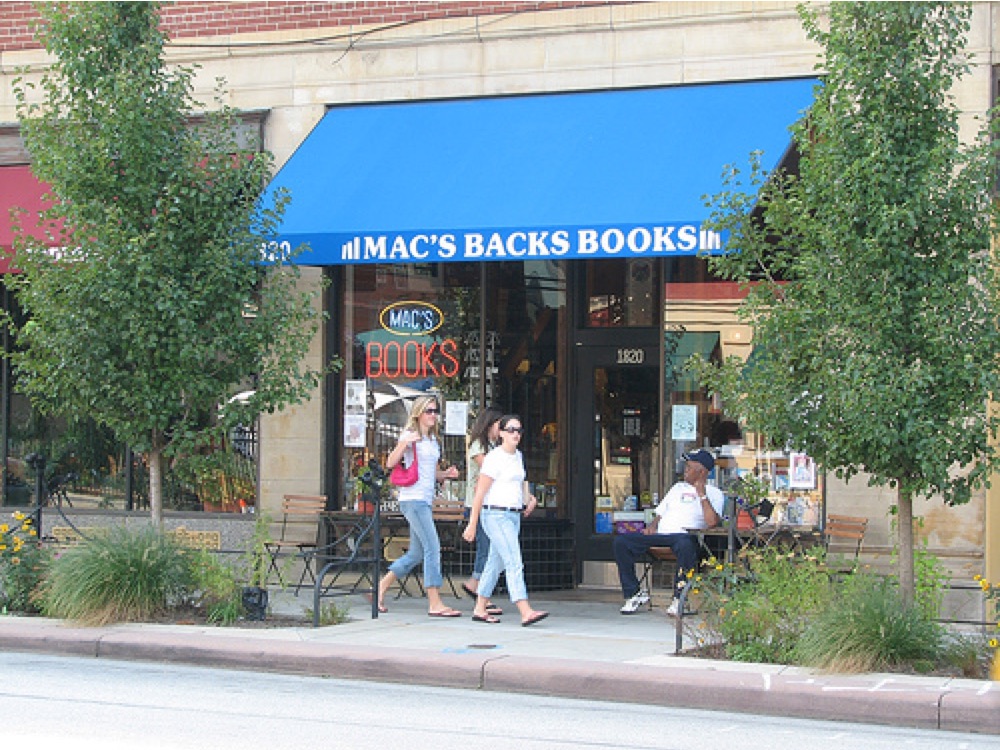Exploring Ramona’s Portland: An Interview with Laura O. Foster
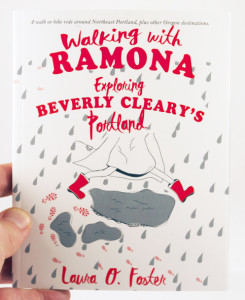 One of the most charming, fun, and satisfying books we’ve had the pleasure of publishing here at Microcosm is Walking with Ramona, a very special and specific guide book that comes out this month. The book takes you on a 3-ish mile loop of the neighborhood where beloved kids’ author Beverly Cleary grew up, and set many of her bestselling novels; more than that, it connects you with the books’ characters and events and takes you into a very real Portland of the past, even if you never end up walking the same sidewalks as young Beverly.
One of the most charming, fun, and satisfying books we’ve had the pleasure of publishing here at Microcosm is Walking with Ramona, a very special and specific guide book that comes out this month. The book takes you on a 3-ish mile loop of the neighborhood where beloved kids’ author Beverly Cleary grew up, and set many of her bestselling novels; more than that, it connects you with the books’ characters and events and takes you into a very real Portland of the past, even if you never end up walking the same sidewalks as young Beverly.
Part of the joy of working on this book was getting to collaborate with the author, local guidebook writer Laura O. Foster. We asked her a few questions over email in preparation for the book’s May 31 publication date. She sent in satisfying answers—and, characteristically, a bunch of colorful photos to illustrate them—see below!
1. What is the story of Walking with Ramona, the tour and the book?
The tour
In 2009, Portland’s Hollywood Library asked me to create and lead a series of walking tours in honor of the neighborhood’s most famous actual resident, Beverly Cleary, and its most famous fictional resident, Ramona Quimby. I’d written three books about exploring Portland’s historic neighborhoods on foot prior to that.
So I read (or re-read) all Mrs. Cleary’s Portland-based books and her two autobiographies, taking notes whenever some site in the city or state was described: the pond where Ellen Tebbits steals Otis Spofford’s shoes, the park where Henry Huggins collects night crawlers, and of course the homes and schools of Beverly’s own childhood. I called the tour “Walking with Ramona.”
Mrs. Cleary is internationally famous. She’s sold over 90 million books, and was awarded the National Medal of Arts. So the tour was a big hit. Everybody had a warm memory of reading her books as a child. Over the years, demand for the tour didn’t go away, but I am primarily a writer, so except for some school groups and nonprofits, I led it infrequently.In September 2015, Katrina Sarson, host of the television show “Oregon Art Beat,” called to ask if I’d lead the show’s crew on the tour, as they prepared a special half hour show in honor of Mrs. Cleary’s coming 100th birthday on April 12, 2016.
The book
A few weeks before the tour date, I met Joe Biel and Elly Blue at a book trade show. I was in the production phase of a self-published guidebook about the Columbia River Gorge. I went to their educational talk to learn about publishing from the other side of the fence—my other books had been published traditionally, and I didn’t know much about the business end of publishing.
Send a proposal, they said. I did, and within a week or so we signed a contract. By December 31, Microcosm had the manuscript in hand. Everyone worked fast to shine it up, and with a Kickstarter campaign to fund a special, birthday-edition print run, we were able to have books available for Mrs. Cleary’s 100th birthday celebration in April.
The book is five chapters: an introduction to Beverly Cleary and her characters, a look at what life was like in pre-Portlandia Portland, the tour itself, a scavenger hunt of sorts—sites all over Oregon where Beverly fished, swam, hiked, raked crabs, shopped, worked, etc.—and a bit of wider history that surrounds these places. Plus it includes where to eat, drink and shop while you’re in her neighborhood.
2. How did you come to be a professional walking guidebook writer?After college I wrote financial analyses of small businesses in Knoxville, Tennessee. I got to leave the plushly stuffy bank offices and ask a lot of questions of people who manufactured woven clothing labels, or repurposed fly-ash from coal-fired utility plants into a road-building material—not unlike how ancient Romans built roads with volcanic ash. Fascinating stuff! I wrote stories about these businesses and their financial histories, and made my pitch as to why their loan request would be (or not) a sound investment for the bank. It may seem irrelevant to a writing career, but my learning to tell a compelling tale with both technical and narrative info about a mundane topic brought me a lot of satisfaction. It was a good lesson.
By my late 20s, I’d left banking, studied ornamental horticulture, moved to Portland and soon took up contract writing, which ultimately led to book publishing. I worked at Beyond Words, a frisky company in Hillsboro, where anyone’s initiative to take on a job was rewarded with a show of confidence. Within a year I was its acquisition and developmental editor, working in adult nonfiction.
With publishing demystified, it seemed to me I could write a book. The book I’d been wanting to read wasn’t out there: one that’d tell you stories while you wandered Portland’s hidden trails, side streets, overgrown staircases and wild/industrial beaches. I’ve always liked to get lost and work back to home using a AAA map, and I’d been poking around the city for years. And then I met my husband. Not only a born-here Portlander who knew the secret trails and stairs of the West Hills, he’s a geologist and engineer who taught me to look forensically at landforms and interpret what had taken place there. After a courtship of rocks and walks, I’d discovered a new layer of Portland. We got married and I had a book I knew would be fun to write, and fun to read.That book, Portland Hill Walks, was the first of several Portland-based guidebooks.
3. In developing Walking with Ramona, you thoroughly explored Beverly Cleary’s old neighborhood in Northeast Portland, read all of her Portland books, and read her memoirs. What fact, place, or story did you learn that surprised you the most? What is your favorite historical spot on the tour? What is your favorite shop, cafe, or restaurant on the tour to take a break at?
In developing the book, I loved discovering esoteric bits of Portland life, like Beverly’s six-year orthodontia odyssey with kind Dr. Meaney, in downtown’s Selling Building at Southwest 6th and Alder. That building is still home to professionals, and has its own fascinating story that I tell in the book. As with Beverly’s train trip to Rockaway, on the Oregon Coast, prescribed as a cure for illness one summer, I use her life’s places and events as a way to weave in a larger Portland story—of what’s changed, and what hasn’t.
I loved the fact that Beverly learned to be a reader by going to the Roseway Theater during the silent movie era and reading the titles as they streamed by. That theater is still running films, talkies now, on historic Sandy Boulevard, an ancient road whose tale I tell in the book.
I loved how she wrote that, the year she went to Gregory Heights School, she’d ride to school on the handlebars of a bike pedaled by her crush, an eighth grader. He earned her ire, though, when he offered gallantly to bury the family’s cat, but then carried it to its grave by its tail. With my book, you can gaze upon the house where the cat now reposes in peace, presumably somewhere in the back yard. In Beezus and Ramona, Beverly has her characters treat a departed cat with much more respect.4. What other projects are you working on now? What’s next for you?
In May 2016, my company, Towns to Trails Media, is releasing its first book, Columbia Gorge Getaways: 12 Weekend Adventures, from Towns to Trails. As a set of multi-day itineraries that covers everything from picking cherries to paragliding, it’s the first complete visitor’s guide to the gorge, one of the nation’s few designated National Scenic Areas.
And of course I’ll be out there walking around. Join me on a “Walking with Ramona” tour! I lead the 3-mile walk as part of the free Ten Toe Express series of walks sponsored by the City of Portland. Meet at the Beverly Cleary Sculpture Garden in Grant Park on Thursday, June 9, 6 p.m. or on Saturday, September 10, 9 a.m.
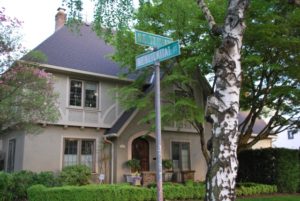
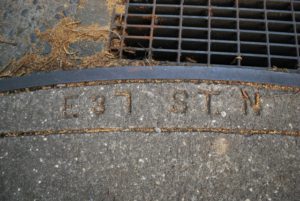

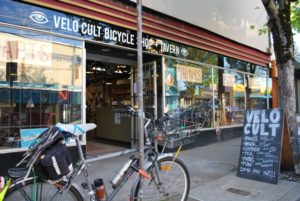


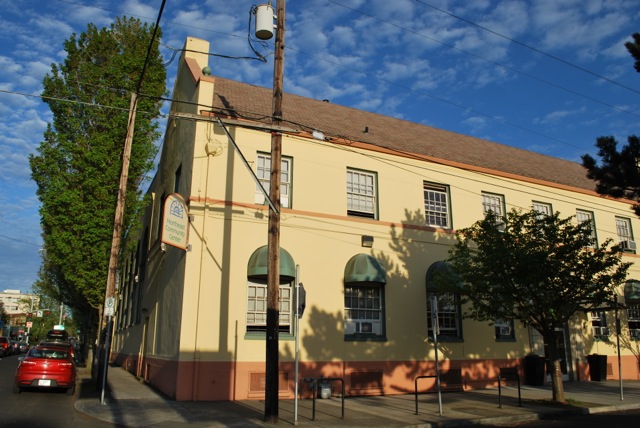
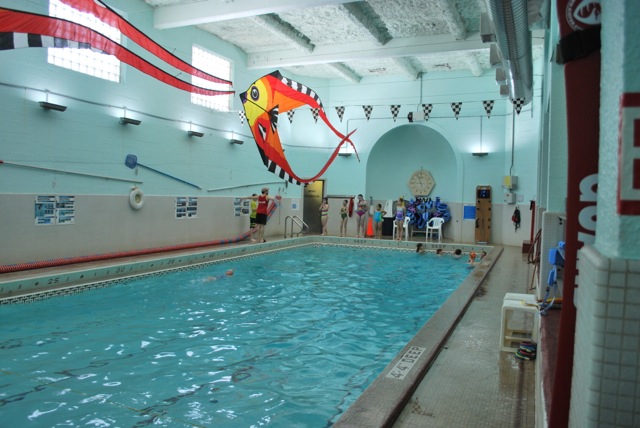
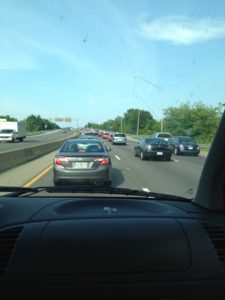 Leaving work right around 5pm and biking home in rush hour traffic is always a big treat. Swooping past the blocks of cars waiting to get on the freeway in Portland’s Rose Quarter is one of my life’s not-so-guilty pleasures. I don’t take pleasure in the frustration of people caught in traffic, but the freedom to move down busy streets with relaxed alertness rather than stiff, fearful caution is a joy I’ve only experienced during group bike rides like Critical Mass. During rush hour in Portland, cars form their own Critical Mass. Their daily demonstration is more effective than the bicycle variety, as it’s always well-heeded by leaders who want to widen roads and add more asphalt to our green-ish city. I wish these blacktop-happy folks would read up on
Leaving work right around 5pm and biking home in rush hour traffic is always a big treat. Swooping past the blocks of cars waiting to get on the freeway in Portland’s Rose Quarter is one of my life’s not-so-guilty pleasures. I don’t take pleasure in the frustration of people caught in traffic, but the freedom to move down busy streets with relaxed alertness rather than stiff, fearful caution is a joy I’ve only experienced during group bike rides like Critical Mass. During rush hour in Portland, cars form their own Critical Mass. Their daily demonstration is more effective than the bicycle variety, as it’s always well-heeded by leaders who want to widen roads and add more asphalt to our green-ish city. I wish these blacktop-happy folks would read up on 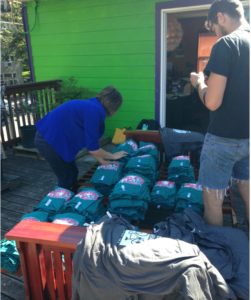
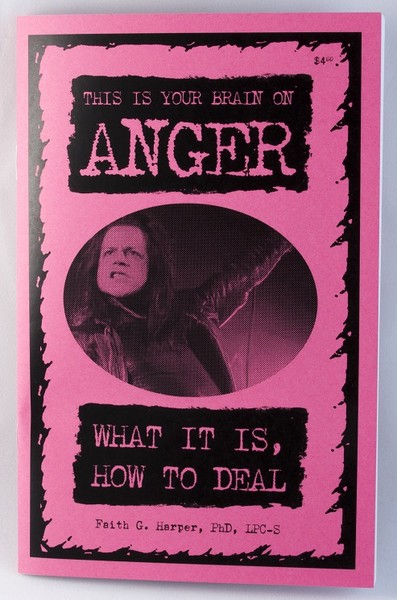

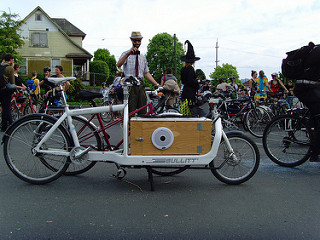 About a year ago, I was visiting my pal Davey’s bike shop (the recently exploded & then reopened
About a year ago, I was visiting my pal Davey’s bike shop (the recently exploded & then reopened 